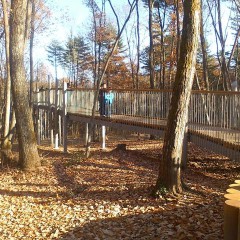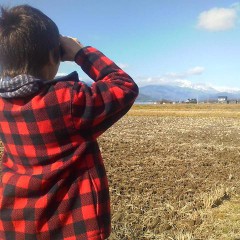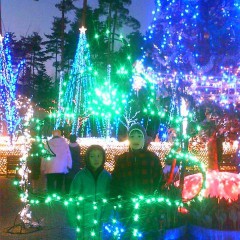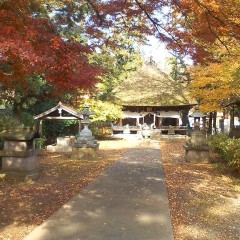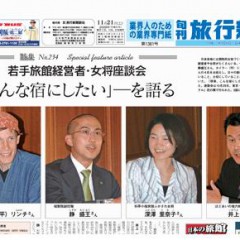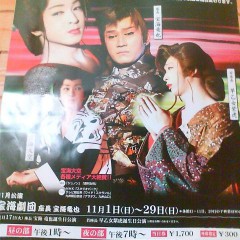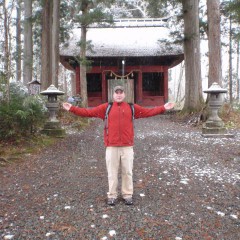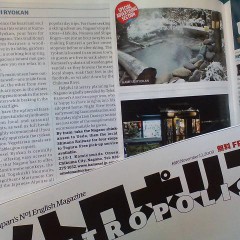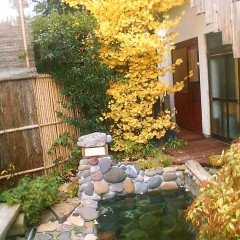先日はTVで国の税金無駄扱いの番組があった:馬は1頭も無い牧場、何も無い所で立派な資料館など。その資料館に空から見たでかい写真が床になっていた;素晴らしいけど来館人数が少なくて見る人がいない。
長野県の国営アルプスあずみの公園は7月に大町・松川地区がオープンしました。「空中回廊」で森の上が見えるとか、変わった乗り物とかで話題になっています。この勤労感謝の日に家族を連れて、行って見ました。TV番組の様な税金無駄扱いか、人が集まる国の宝物のどちらでしょうか?結論は:
難しい。
ある建物(堀金・穂高地区の受付所)の床は空から撮った写真だった。「あっ、TVと一緒!」と思った。
そして、話題の、期待していた空中回廊は森の木の葉っぱが既に落ちていたせいか、あまり感動的じゃなかった。
例の乗り物は確かに、子供達も子供のお父ちゃん(=私)も楽しめた。ミニスクーターやでかいドーナツ風船を乗って、芝生の坂を下りて、楽しめました。しかし、その横の普通なプレーグラウンドの普通な滑り台も楽しめた。
木の皮を使ったクラフト作り体験とかもあったけど、東京でも出来そうな体験だった。「アルプス」の公園だから、アルプスでしか出来ない体験の方が良い様な気がする。例えば、自分で森で拾った皮を使って作るとか。木のないコンクリートだらけの東京じゃ出来ない。
それもポイントだと思った:「アルプス」と言いながら、公園はアルプスのふもとにあったせいで山が見えない。残念でした。山が見える展望台は作れるでしょうか?つまり、ただの子供の滑り台でも、上高地の様な大自然な背景があれば「国営公園」らしさが出るのではないかと思いました。
沢山のお客さんが致し、沢山の笑顔もあったから税金の無駄扱いではないと思いました。しかし、国レベルより、県又は町で作ってもおかしくない(もしくは作るべきな)公園だと私が思いました。
注:夜は堀金・穂高地区の方に移って、イルミネーションを楽しんできました。
There was a show on TV recently about wasteful government spending: a horse ranch with no horses, a spectacular museum in the middle of nowhere with no visitors, etc. The museum had an aerial view picture blown up and displayed on the floor -- beautiful except no one ever comes to see it.
Here in Nagano Prefecture, the Omachi section of the Alps Azumino Government National Park opened in July. It features a special bridge allowing visitors to see the forest canopy, as well as fanciful toys people can ride in the park. Was this another example of a waste of tax dollars? The family and I went to check it out on this Labor Day Holiday. And the verdict is:
Mixed.
First of all, one of the buildings (the entrance hall of the Hotaka area) had an aerial photo as its floor -- not a good omen. The forest canopy path was a disappointment -- maybe it would've been more enjoyable before all the leaves had fallen. The funky toys were fun to ride down the grassy slopes -- mini scooters and huge doughnut balloons. However, the kids enjoyed the slide in the kiddy playground just as much. There was a crafts-making place where you could make trinkets out of tree bark and stuff. But you could do that just as well in Tokyo. This is the "Alps" park, so why not offer things you can only do in the Alps. For example, have the kids go into the forest and pick up bark to make their own creation. You can't do that in the concrete jungle of Tokyo. That's what was missing at this Alps park -- the Alps! Since the park was too close to the mountains, you couldn't see the peaks. Even a kiddy slide would be fantastic if it had the Alps as a backdrop. So how about an Alps viewing platform?
There were a lot of visitors, and a lot of smiling faces, so I'd say the park isn't a waste of tax dollars. And we enjoyed the drive over to the Hotaka side and its illumination show at night. But the whole park felt like a regular regional one, not a spectacular national one, in my humble opinion.
国営アルプスあずみの公園のHPはこちらAlps Azumino Government National Park's website is here.
